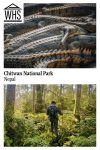Chitwan National Park
By Catherine
What is Chitwan National Park?
Chitwan National Park, in the southern plains of Nepal, encompasses an area of approximately 952 sq km (368 sq mi). The park is an ecological paradise filled with forests, grasslands, and marshes and home to numerous species of rare wildlife like the Bengal tiger, one-horned rhinoceros, Asian elephant, and over 600 bird species.
Disclosure: This article contains affiliate links. Making a purchase through an affiliate link will mean a small commission for this website. This will not affect your price. Privacy policy.
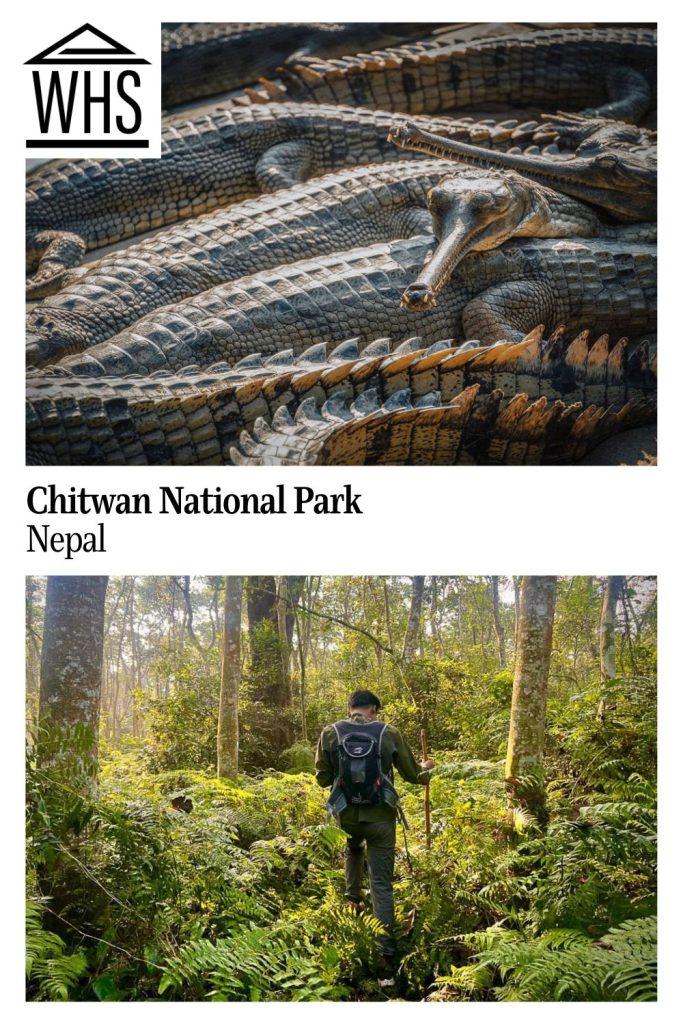
The park is divided into several regions. Kasara, the park headquarters, houses an elephant stable and a gharial breeding center. Sauraha is the primary entry point for travelers and the central hub for safari activities. The Western Buffer Zone is integral for community-based wildlife conservation.
Why is Chitwan National Park a UNESCO World Heritage site?
Chitwan National Park was added to the UNESCO World Heritage list in 1984 owing to its importance in the global effort to conserve the planet’s biodiversity. It is home to unique ecosystems that are basically intact, allowing it to support over 700 wildlife species, including several endangered species such as the Bengal tiger, the one-horned rhinoceros, and the gharial crocodile.
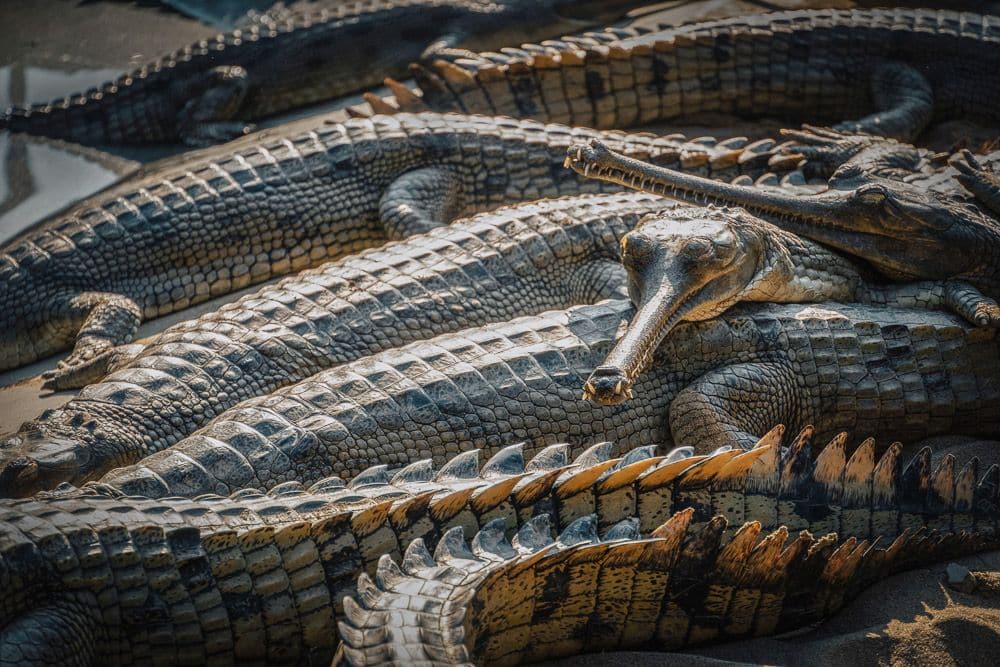
UNESCO also describes it as “an area of exceptional natural beauty.” It includes two sacred places for Hindus and has been home to an indigenous group, the Tharu, for centuries.
What can you expect on a visit to Chitwan National Park?
When people think of Nepal, they often imagine the snow-covered peaks and challenging hiking trails of the Himalayas: places like Sagarmatha National Park, also a UNESCO site. However, Chitwan National Park offers a contrasting experience. It transports visitors to a green subtropical landscape reminiscent of the safaris found in Africa.
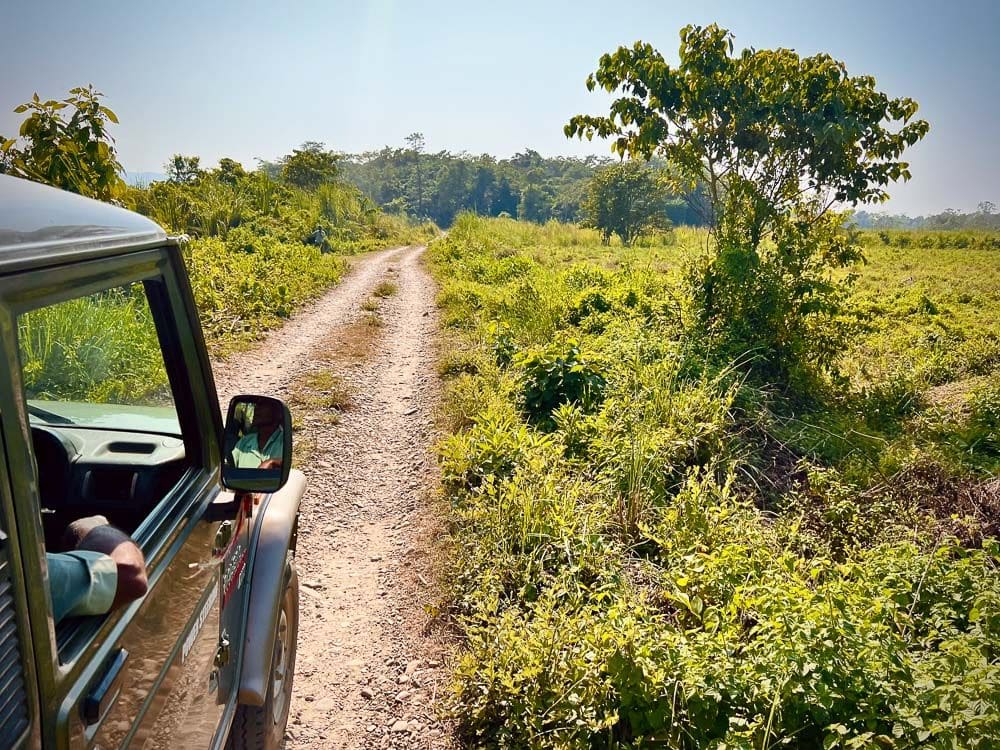
In Chitwan National Park, I went on an early morning jungle walk and a jeep tour, but you can go on an elephant safari or glide on a canoe trip on the Rapti River. All these Chitwan jungle safari adventures let you explore the park while learning of its conservation efforts.
Queue up for the canoe ride into the park; once you’re in, your guide shares life-or-death instructions in case you come face-to-face with a tiger or elephant. Freeze, back away, or play dead. This advice has saved him and other tourists before.
Hack ferns following elephant trails across the grasslands. Track tiger prints along the riverside and use binoculars to spot rhinos, crocodiles, and local bulls. One of the most incredible parts of Chitwan is the chance to get incredibly close to rare wildlife species. I count myself lucky to have encountered an adult rhino no more than a few meters away.
Look at accommodations near the park, or use the map below to search:
Is Chitwan National Park worth visiting?
Although it is quite far out of the way, Chitwan National Park is worth visiting, especially for those passionate about wildlife and nature. With so much nature in and around the park, you can set aside a few days for different adventures. Outside the park, experiencing the local Tharu culture through traditional dance performances and delicious Nepalese cuisine is an added bonus.
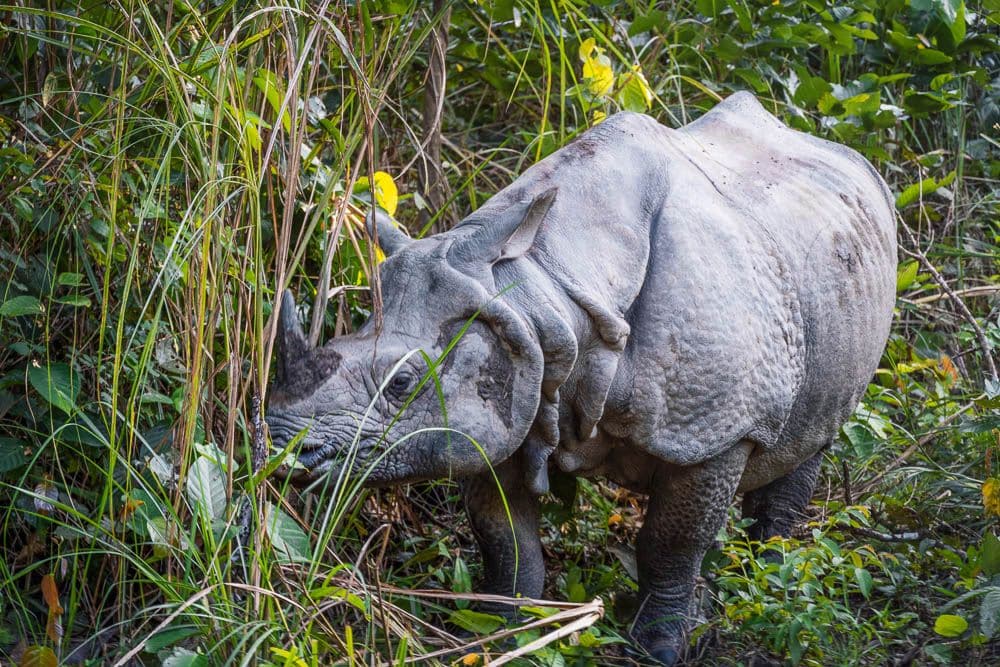
While it might not be the first choice for those strictly interested in high-altitude trekking or mountaineering, anyone looking to explore a different facet of Nepal, beyond its famed mountains, would find Chitwan a worthwhile detour.
Tips for visiting Chitwan National Park
Visit during the dry season. Leeches are common throughout the year but are especially plentiful during the rainy season.
Entering the park without a tour guide is prohibited. Shop around locally to find the best price and tour combination for your safari. Purchase an entry permit at the ticket counter in Sauraha. They are only valid for one day, and your tour guide will help obtain them for you the morning of. As you need to pay for a permit per day, combining multiple activities in a single day is cost-effective.
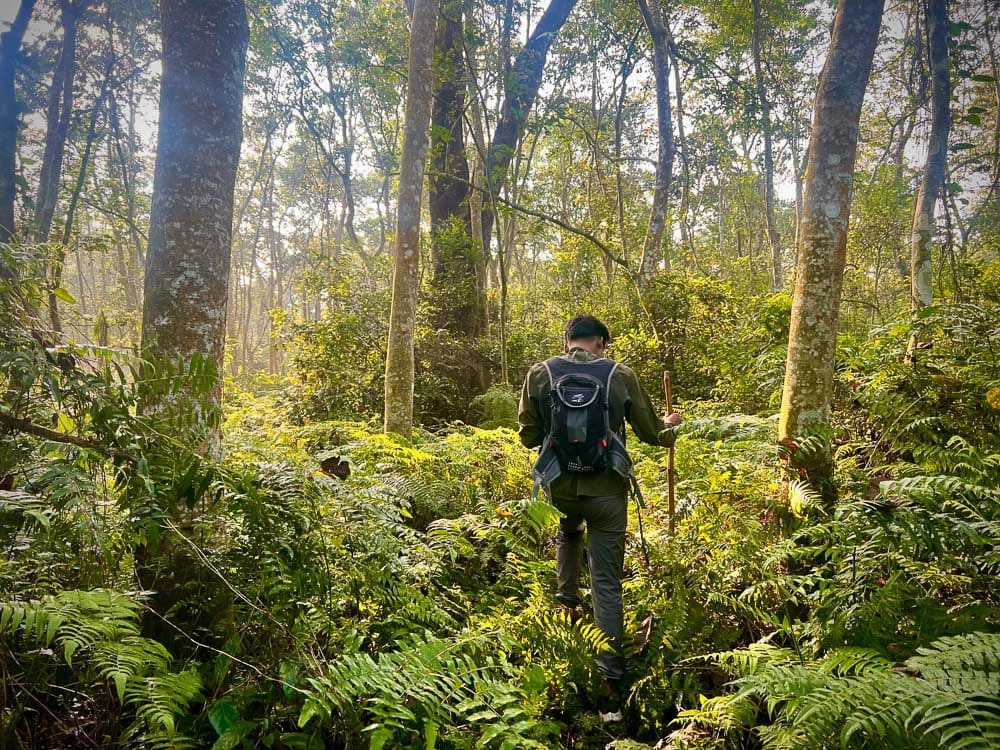
Do not wear bright colors (white, red, yellow). Bright colors can disturb animals and make them more aggressive. It is best to stick with neutral tones.
There are many options for day safaris and multi-day safaris in Chitwan. Click on the images below to get a list of possibilities:
Where is Chitwan National Park?
Chitwan National Park is located in the southern central Terai region of Nepal. Here are two of the most common ways of getting to the park:
By car from Kathmandu: Kathmandu, the capital city of Nepal, is the nearest major city to Chitwan National Park and where most tourists start their Nepal trip. The distance between them is approximately 146 kilometers, and it takes around 5-6 hours to reach by car. There is plenty of free parking available at the entrance of the park.
By public transportation: Regular local buses run from Kathmandu to Chitwan. The tourist bus can take around 5-7 hours, while local buses take much longer. Once you reach the bus stop in Chitwan, you can hire a taxi or rickshaw to reach the park.
For more information about Chitwan National Park, including details on opening hours and admission fees, please refer to its official website.
Have you been to Chitwan National Park? If so, do you have any additional information or advice about this UNESCO World Heritage site? Please add your comments below!

